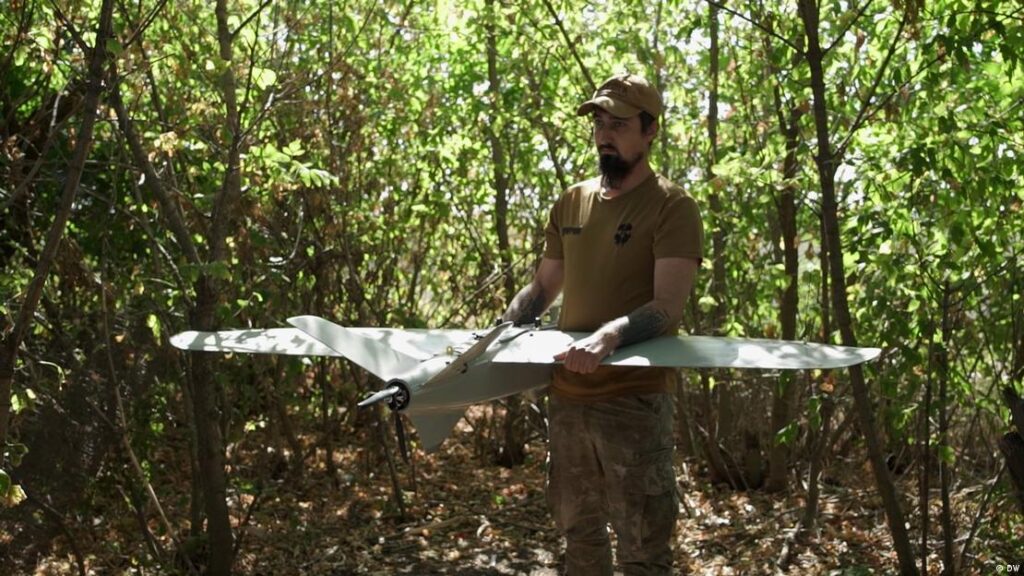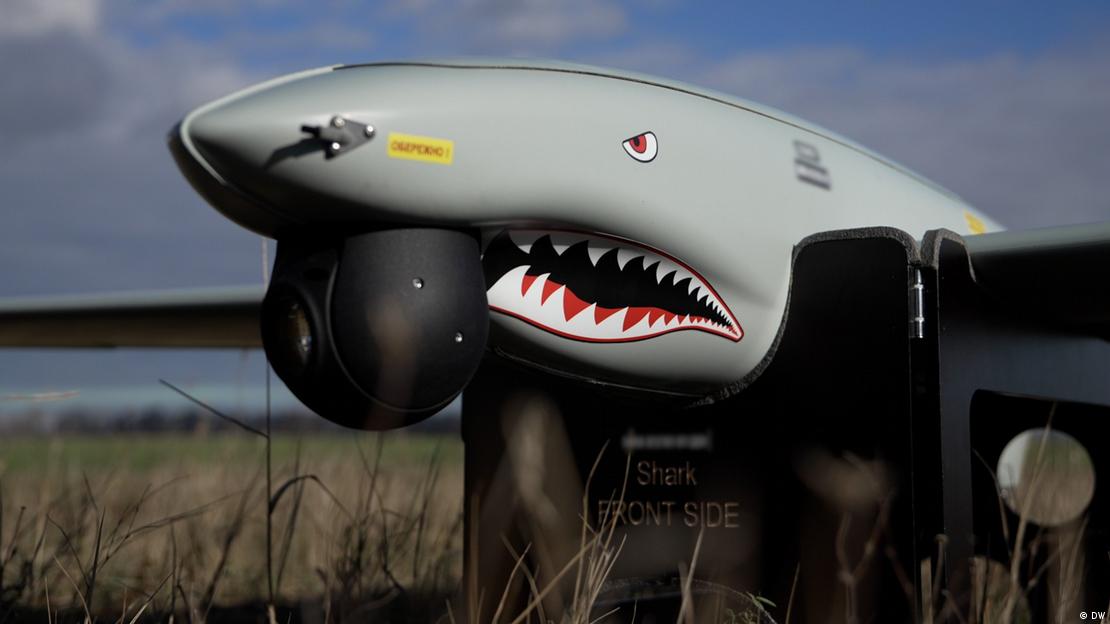Kiev says that drone production in the country has increased more than 100 times since the Russian invasion, and companies have grown from seven to more than 150. Despite the diversity of models, there is still a lack of quantity.
(DW) In one of Skyeton’s workshops, work never stops. The employees of this private Ukrainian defense company work around the clock: cutting components, assembling them, checking the software. The end product is the Raybird-3 drone system, military designation: ACS-3.
The unmanned mini-aircraft has a wingspan of almost three meters and weighs less than half a kilo. It is capable of flying up to 120 kilometers and can be used for reconnaissance flights over enemy territory.
The Raybird-3 has been in use by the Ukrainian armed forces since 2018. But since February 2022, Skyeton has dramatically increased production.
“What before 2022 we needed a year to do, we can now do in a few weeks,” says Andrij Fialkowskyj, director of Skyeton, which until 2014 produced training aircraft.
His employees manufacture three aircraft a week, a catapult launch system, two ground stations, an antenna unit and a set of spare parts. The company’s biggest problem is security against Russian attacks. For this reason, production has been distributed in different locations.
But Skyeton is not the only company to have expanded drone production in recent years. In fact, the industry is experiencing a real boom in Ukraine: demand from the Ukrainian military has increased rapidly since Russia invaded Ukraine in February 2022 and combat drones have become an important factor in the battles against the invaders. Depending on the model, the unmanned aircraft can be used both for reconnaissance and for firing at enemy targets.
Many small and large companies in Ukraine are developing their own systems. One of them is Ukrspecsystems, which produces the Shark remote-controlled reconnaissance drone with a range of around 80 kilometers. According to the manufacturer, it took just six months from the start of development to the first tests. The drone was presented to the public in October 2022. Other Ukrainian developers report similar timescales.

Many models, little information
Among the reconnaissance drones manufactured in Ukraine, the Shark, Leleka-100 (Stork), Furia, Valkyrie and PD-2 (People’s Drone) models are popular with the military. Their main function is to scout out the location of enemy troops and depots, allowing both artillery and long-range Himars missile systems to hit targets with greater precision.
In the category of drones with first-person view (FPV), controlled from the perspective of a virtual pilot on board, experts highlight the Pegasus, Bucephal, Bat and Vampire models. The vertical take-off multi-rotor drones are capable of carrying and dropping small bombs. They are purchased for the Ukrainian army through fundraising or as part of the government’s Army of Drones project.
One of the Ukrainian inventions about which little is known is the Beaver kamikaze drone, manufactured by the private company UkrJet. It can supposedly fly up to a thousand kilometers, but no official information is available. Observers claim that these drones have been used on numerous occasions to hit targets in Moscow. Russian media have also published images of drones similar to the UkrJet UJ-22 Airborne that are said to have reached the Russian capital. The Rubaka kamikaze drone is another example of a long-range attack aircraft developed by Ukraine – but little is known about this model.
These drones are manufactured according to the same principle as the Iranian Shahed models that Russia uses to attack Ukraine. The GPS-guided kamikaze drones can be armed with warheads containing up to 50 kilos of explosive. The general director of state arms manufacturer Ukroboronprom, Herman Smetanin, claims that the company has also developed such a drone, which is already in serial production. Smetanin also hinted at the existence of “more powerful models”.

Ukrainians need large attack drones
“We have increased the production of drones a hundredfold, in some cases by 150 times, possibly even more,” says Giorgi Tskhakaia, advisor to the Ukrainian Minister for Digital Transformation and one of the architects of the Drone Army project.
He points out, however, that there will never be enough drones. “Drones are always in short supply because they are urgently needed,” he told DW. According to Tskhakaia, at the beginning of the invasion there were seven drone manufacturers in Ukraine. A year and a half later, there were 150, most of them private companies.
Valeriy Romanenko, a senior official at the State Aviation Museum, describes Ukraine’s progress over the last 18 months in producing its own drones as a “great leap”. “At the beginning of the war, we only had Turkish Bayraktar drones. By the summer of 2023, we officially had 28 more drones, nine of them kamikaze.”
But that’s not enough, he says. Kamikaze drones are Ukraine’s weak point.
“If we want to carry out mass attacks against Russian arms factories, airfields and warehouses, we need heavy drones that can penetrate the roof of a building and hit the target inside. And we need buckets full of them to rain down on us,” he said, referring to the huge quantity needed to counter the Russian army.

Unification or diversity?
Romanenko believes that it would be possible to increase the number of attack drones produced in Ukraine by combining the efforts of different manufacturers and equipping the products with similar components.
“So far, we haven’t managed to select one or two individual drones and mass-produce them. CRPA antennas, controllers, electronic components, motors and other equipment differ between different manufacturers. This creates fragmentation in the drones and therefore we can’t produce on such a large scale as the Russians,” he laments.
Giorgi Tskhakaia of the Drone Army project, on the other hand, assumes that the state will follow the philosophy of the open market and free competition, given that the more manufacturers there are, the more intensive the research and development of new products will be.
“We can’t beat Russia in the traditional way, we have to be more innovative. And competition creates innovation,” stresses Tskhakaia.

*** Translated by DEFCONPress FYI Team ***
